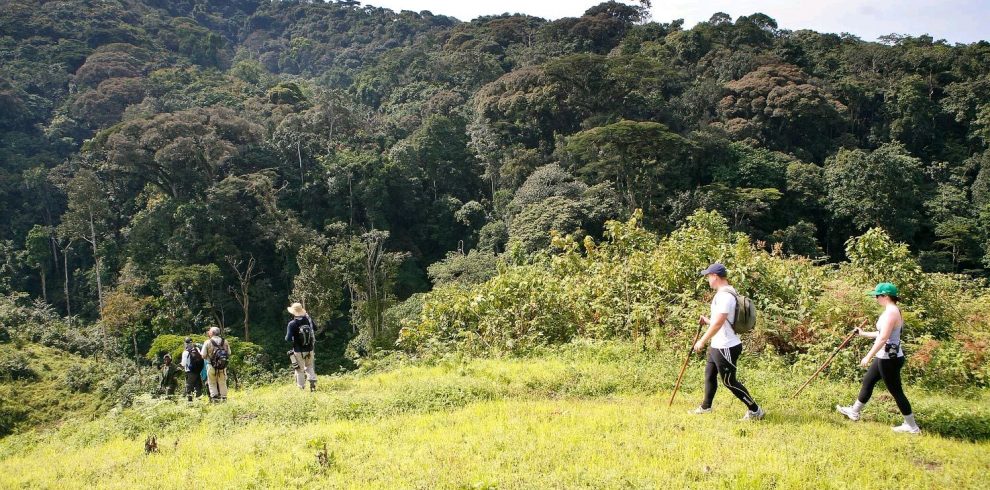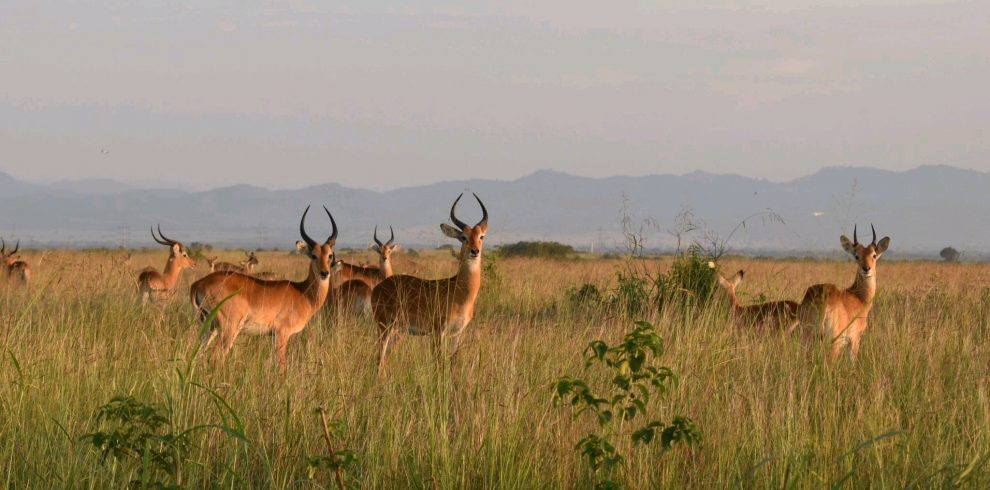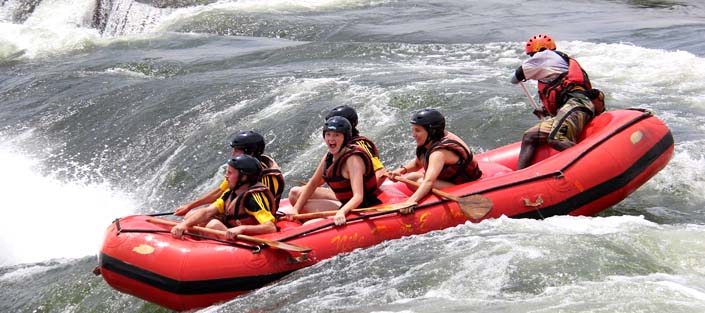Overview
Despite the common extreme weather conditions like the un-predicated rains, our Rwenzori itineraries caters for both capable <strong>mountaineers</strong> and less-experienced <strong>hikers</strong>. Whether you want to conquer Africa’s third highest mountain with an attempt on <strong>Margherita Peak</strong>, or simply take the dramatic scenery en route to <strong>6 Day Weismann’s Peak</strong>, our <strong>Rwenzori mountains trekking</strong> itineraries will take you deep into these unforgettable mountains.
<strong>When to trek the Rwenzoris?</strong>
The Rwenzori massif is characterized by heavy rainfalls, which can make trekking conditions difficult. The dry season is during the months June-August and December-February, but even during these months you should come prepared for the possibility of heavy rainfall. Don’t allow anything to prevent you from conquering these fabled <strong>mountains of the moon </strong>during this <strong>rwenzori mountains trekking</strong> experience.
<strong>Planning your Rwenzori mountains trekking- things to consider</strong>
Fitness and medical issues
<strong>Rwenzori trek tours</strong> require a good level of fitness. You will be asked about your general health when you book your trek. Altitude sickness can be a problem for many people. It’s highly recommended that you consider taking a day off mid-climb, to acclimatize to the high altitude.
Insurance
If you’re planning to climb the Ruwenzori’s, particularly if you are climbing Margherita, you are advised to take out travel insurance.
Emergency contacts
You will need to provide these when you sign the disclaimer form before starting your trek.
<strong>Getting ready for the safari– what to know</strong>
Hiring a Porter
Porters are allowed to carry a maximum of 15 kg each. This will include your clothes, hiking and camping equipment and all your food. The porters will collect firewood and water every evening for you at camp so you only need to carry one day’s personal supply of drinking water at a time.
Ranger guides
Since you will be walking in the Rwenzori Mountains National Park, you will be allocated two or more armed Uganda Wildlife Authority rangers who will act as your guides throughout the trip.
Walking pole
Invaluable! No need to spend money on one of those fancy walking poles, just ask one of the guides to cut down a piece of bamboo for you.
Waterproof clothing
High quality water proof clothing will be very important for you since the rains on the mountain may sometimes go on for days.
Footwear
Hiking boots with ankle support are the best option. If you plan to wear Wellington ‘gum’ boots, get some good insoles. Ankle-high boots with gaiters are recommended as they will keep out a lot of rain and water (and most insects).
<strong>What to carry in your day pack</strong>
Your day pack (personal rucksack) should contain your waterproof jacket and waterproof trousers, drinking water, sunscreen, mosquito repellent and snacks.
<strong>Snacks</strong>
Stock up on plenty of your favorite snacks. G’ nuts (groundnuts), biscuits, bananas and dried fruit will give you more energy than chocolate and sweets.
<strong>Water</strong>
To keep hydrated at altitude, you will need to drink at least two litres of drinking water per day, even in cold weather. The porters collect and boil water every night. By the time you drink it the next morning, it will have cooled nicely.
<strong> Hot water bottle</strong>
Since it is usually cold up in the mountains, it is always advisable to carry a hot water bottle.
Trek Summary
- Day 1: Transfer from Entebbe to Kasese by road driving through beautiful landscape of coffee farms, Tea plantations, roadside fruit and vegetable markets. The drive is about 7 hours with a lunch break en-route via fort portal.
- Day 2: Your trek starts at the Trekkers Hostel in Kyanjuki, Kilembe which is 12km from Kasese town. You will meet with your climb team at 8:30am for a final kit check and briefing, before setting off on foot from the Trekkers Hostel. The walk is approx. 9.5 km with an expected timeframe of about 5 to 7 hours. The start height is 1,450 metres, climbing to 2,598 metres, where sleep at Sine Hut which is at a height of 2,596 meters is usually conducted.
- Day 3: Commence walking after a hearty breakfast. Today’s trail climbs steadily to begin with, as you enter the bamboo zone and then continue onto a steep moss-covered ridge about 200m in height. At around 8:30am, trekking starts and you enter the Bamboo-Mimulopsis Zone which is a steep climb with many high steps.
- Day 4: Your starting height today is 3,590 metres, climbing to 4,200 metres on the top of the confluence between the Nyamwamba and Namusangi Valleys, before dropping to Bugata Camp at 4,100m. Trekking along the valley floor, you will pass small bogs and giant lobelias. Both sides of the valley are lined with sheer cliff faces as we near the confluence of the Nyamwamba and Namusangi Valleys.
- Day 5: Today is a rest and acclimatisation day, though with the option of an acclimatisation trek to a high pass if you are feeling strong.
- Day 6: Leaving camp after breakfast, you continue along the valley with fantastic views of the Namusangi below. The last half kilometre to the ridge is a steep climb. The total distance is 9km with a time frame of 4 to 6 hours.
- Day 7: Descend to Kilembe. Today’s trail is long but downhill all the way, as you cross the Nyamwamba Valley, then continue through the bamboo forest and down the ridge to the Ranger’s Post.
- Day 8: Your itinerary ends this morning at Marafiki Safari Lodge. We will transfer back to Entebbe for your flight back home.





